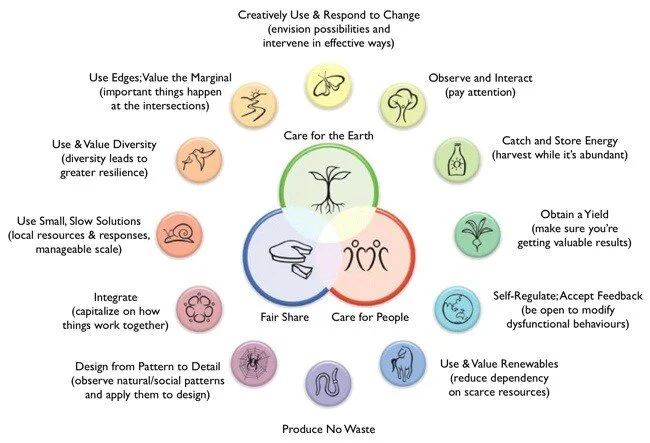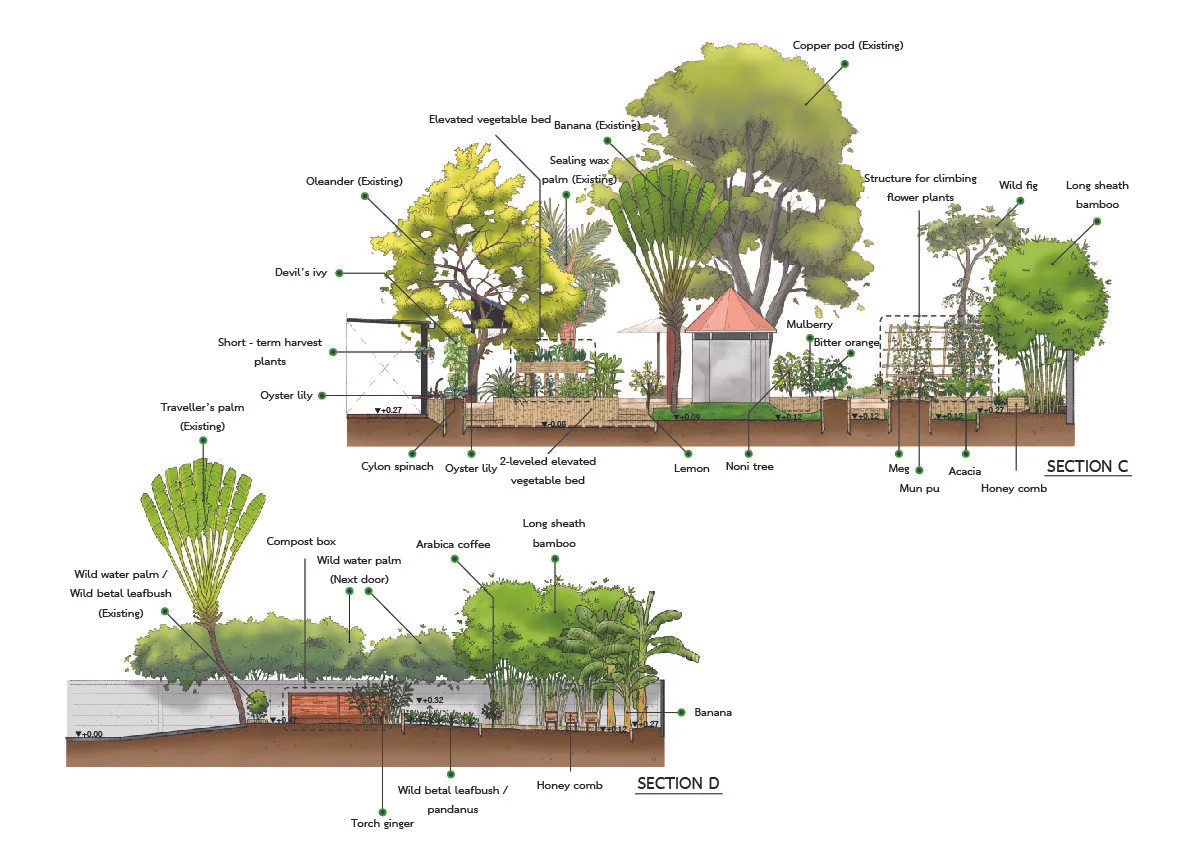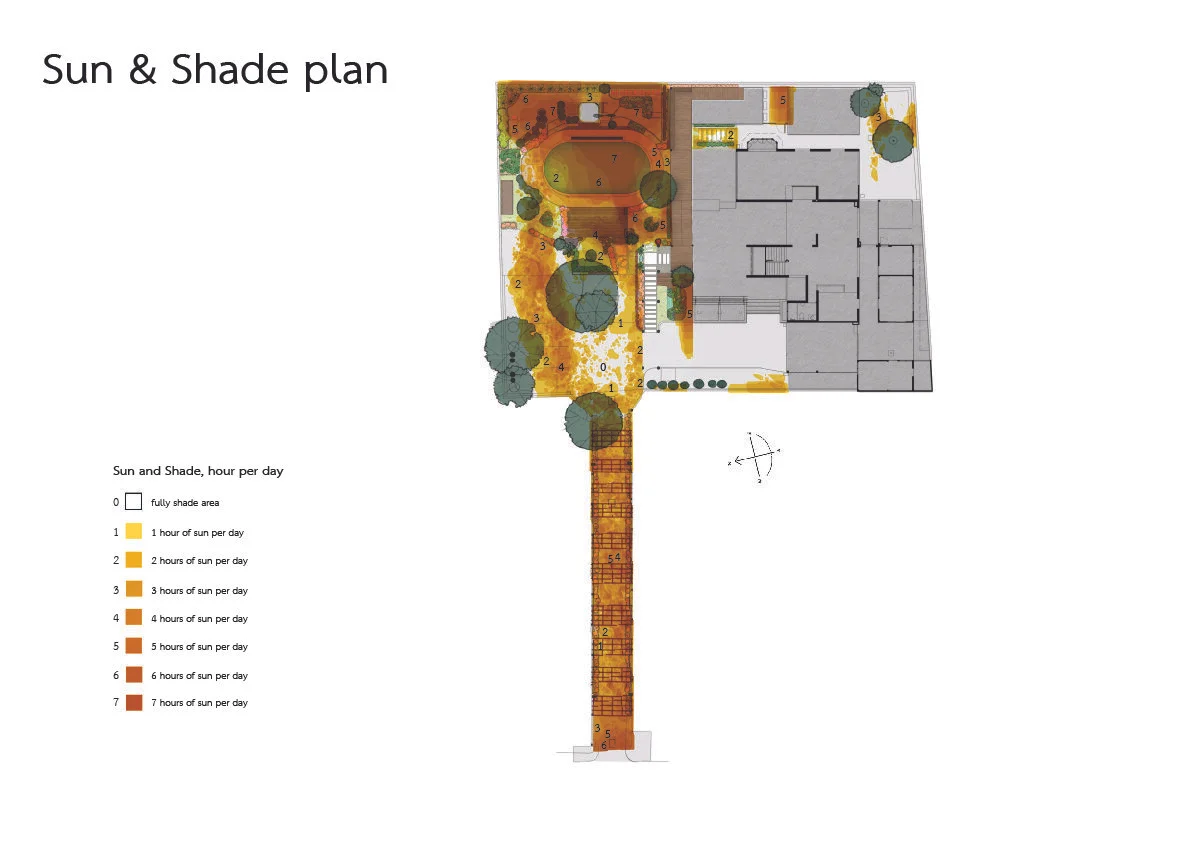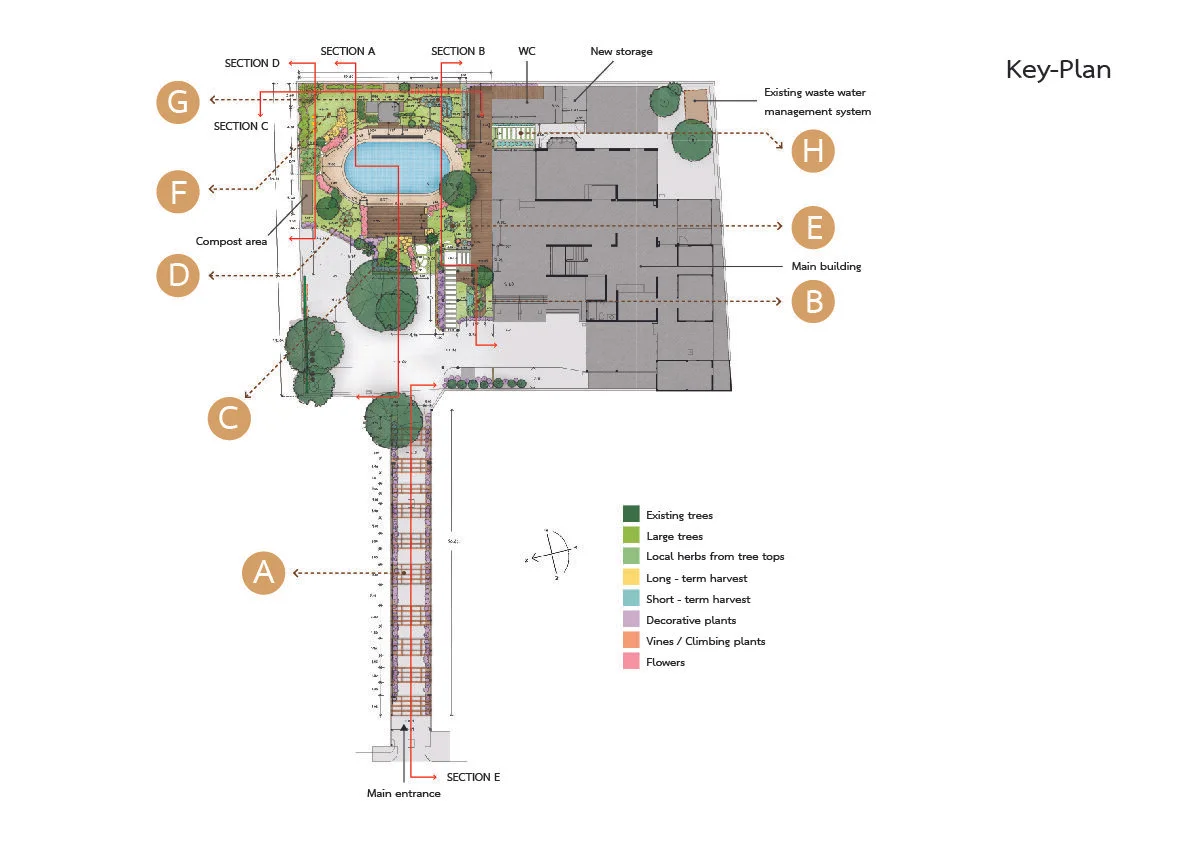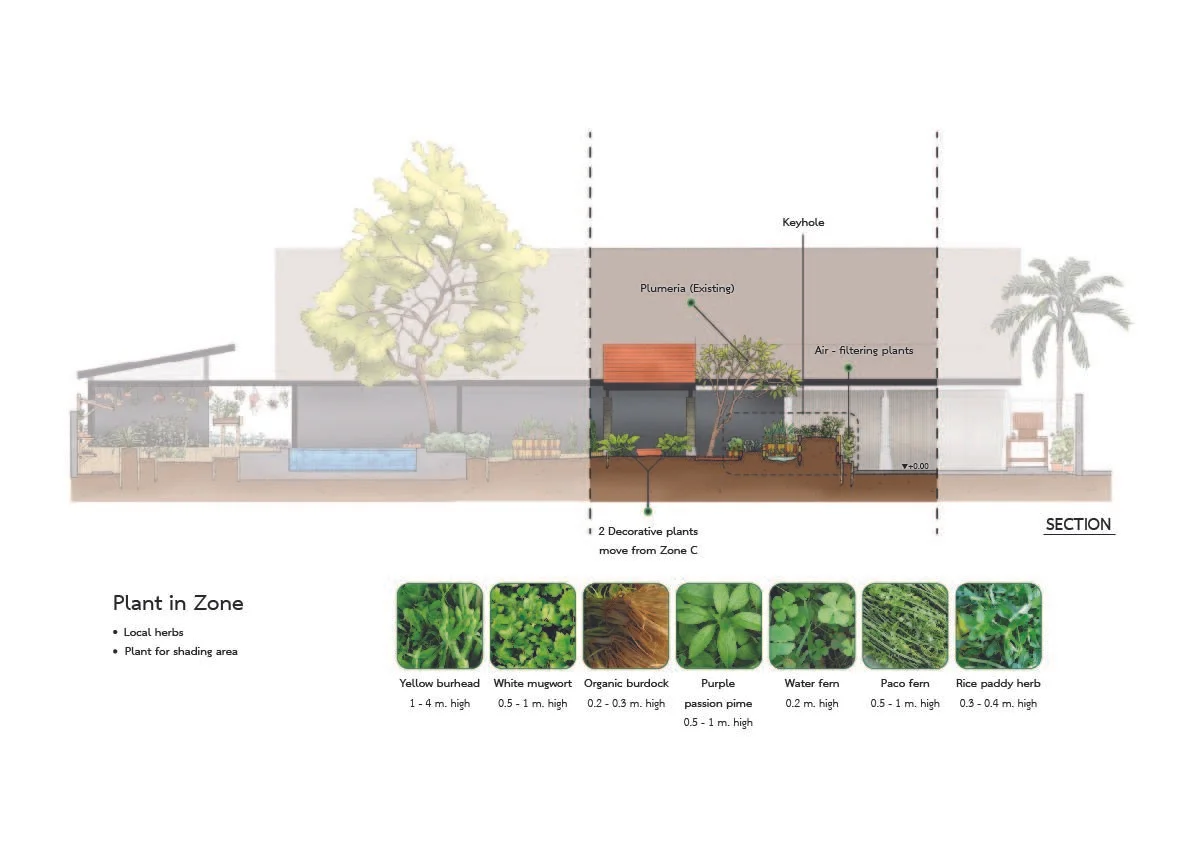Using Permaculture to Design the Edible Garden at Bo.lan
Introduction
In mid 2019, the team at Openspace engaged in a six-month project to design and build an edible garden for Bo.lan – the Michelin star restaurant in Bangkok. The team at Bo.lan has championed the sustainability movement, implementing innovative solutions to reduce food and other waste, and using local, organic ingredients where possible. Our edible garden is very much in line with this mandate. To design it, we used permaculture principles, an emphasis on organic processes and relationships of natural elements, as well as making as much of the garden accessible to people of different ages and abilities.
What is permaculture?
Permaculture was crucial in our design process. Before delving into the garden details, it is useful to first look at what it entails. Permaculture is a design process aiming to sustainable and self-sufficient agricultural ecosystems. At its core, it seeks to recreate patterns seen in nature, generating synergies between people, resources, land and the environment and minimising all waste. In fact, the system’s output is not seen as waste but an input to strengthen the feedback loop.
Keyhole garden design with a compost hole in the middle, using food waste from the restaurant to enrich the soil
The 12 principles of permaculture: https://medium.com/land-and-ladle/the-12-design-principles-of-permaculture-as-rules-of-living-e9fc0176dd16
There are 12 main principles of permaculture, first outlined by David Holmgren and Bill Mollison at the university of Tasmania in the late 1970’s, and now widely accepted as the blueprint for all such projects: observe and interact, catch and store energy, obtain a yield, apply self-regulation and accept feedback, use and value renewable resources and services, produce no waste, design from patterns to details, integrate rather than segregate, use small and slow solutions, use and value diversity, use edges and value the marginal, and creatively use and respond to change. The word ‘permaculture’ comes from the phrase ‘permanent agriculture’ as one of the main ideas was achieving a yield year-round; it was however broadened as permaculture now extends far beyond agriculture, with deeper social connotations.
The first principle of permaculture is considered by many to be the most important: you observe and interact with the land you wish to apply the principles to, understand the factors you are dealing with and what will prove important. Moreover, permaculture is always open to feedback and micro-adjustments.
Not surprisingly, we started our design process by observing the available space at Bo.lan.
Permaculture gardening
In gardening, applying these principles allows for the garden to be sustainable and require less effort from its gardener or carer. Permaculture seeks to build up the nutrients in the soil over time. Nutrient-rich soil is essential in growing food all year round.
Cross-sections of the edible garden
Permaculture gardening also prizes choosing the correct plants for the year-long climate. This is very intuitive! Anyone who has tried gardening or even simply having plants at home knows that different plants thrive in different weather conditions. In Bangkok, the weather is hot and humid, with months of heavy rain and overcast skies. The plants chosen need to grow well in these conditions. This is why it is essential to focus on local plants and herbs. At Bo.lan, we had the added challenge of picking ingredients that would be used in the kitchen – in line with the restaurant’s menu.
Designing the Bo.lan Edible Garden
Sun pattern observation
Before looking at the plants we could grow, we took the time to observe the garden and divide it into zones to grow different types of plants. We observed the sun patterns to determine how much direct sunlight each zone received; we noted the proximity to the road and ensured we added buffer zones to filter out pollution coming from road traffic; we observed which areas were naturally shaded and humid to use appropriate plants. We also got input from Chefs Bo and Dylan to ensure that the herbs and vegetables we planted were useful to the kitchen.
This led to the key plan of our design, with eight distinct zones.
Masterplan of the different sections of the edible garden
We then consulted with two prominent Bangkok urban farmers, Nakorn Limpacuptathavon (Prince) and Sunatthalinee Sinprom (Jig), who have a decade of experience in the field and who suggested appropriate species for the edible garden we were building, as well as ways to work with the garden in the long run, from planting to maintenance.
In our design process, we tried to keep as many of the original plants that were already growing well at the site as we could, as well as many of which we replanted to different zones which were better suited to help them thrive. We then added appropriate plants to meet our design brief.
Plant details in different zones of the garden
Lastly, the garden is completely free of pesticides. We sourced untreated materials from around Thailand to ensure that it was as eco-friendly as possible. Moreover, we proposed green solutions to keep away bugs. For example, we suggested using used coffee grounds and eggshells to deter snails from eating the plants, or making sure there are flowers in the garden to attract bees and keep away some insects.
Beehive in the half-managed zone of the garden
A Shared Garden
The Bo.lan Edible Garden is meant to be shared. It has been thought out as a learning centre, open not only to guests of the restaurant, but to anyone with a will to learn. That includes visitors, schools, and potentially some Baan Mankong urban poor communities from around the city. The garden is dotted with information signs in a bamboo structure housing microgreens. The lightning for the signs is solar powered and can last eight hours into the night.
Workshop at Bo.lan run by Prince in November 2019
Observation with LOVE
This project has been a learning ground for the team at Openspace as well. We learnt that when doing gardening or creating any garden space, it is really important to treat the garden as the living space it is. A garden is not static; it is ever-changing, processing and evolving all the time. Plants keep growing and find the space they need to grow – both vertically and horizontally. As seasons change, those the ones that are better suited to the climate dominate, while those that are not rest – but do not die. It is therefore very normal to see different people be more or less efficient depending on the gardening needs, while the garden itself always looks different. Moreover, we might not be able to see all the living elements that make up the garden; some can be very small and some are just the invisible energy that permeates everything.
As humans, it is also SUPER important to keep observing and interacting with LOVE to make it a liveable and sustainable space.





